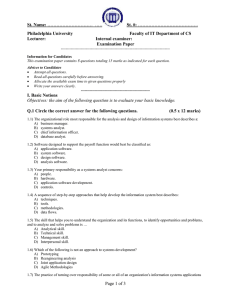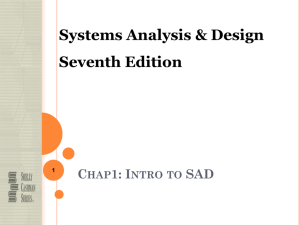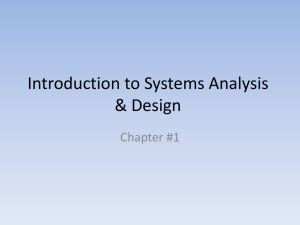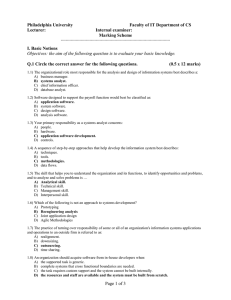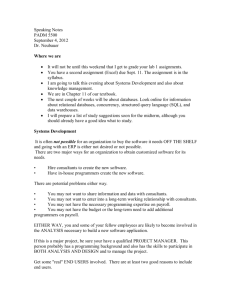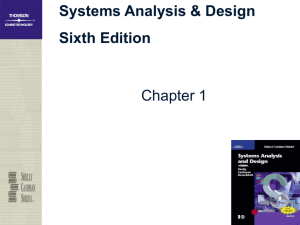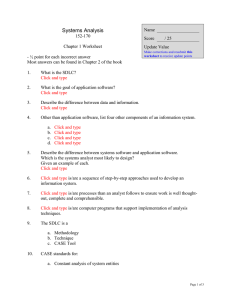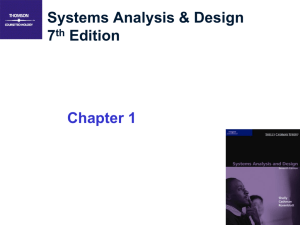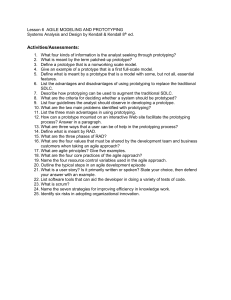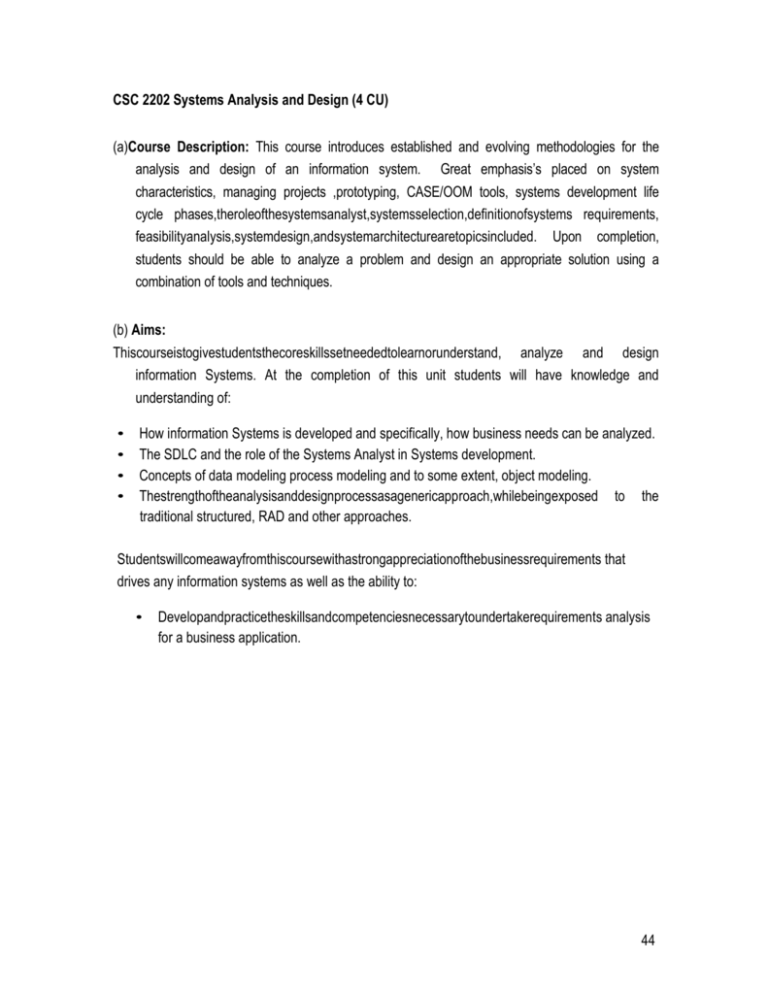
CSC 2202 Systems Analysis and Design (4 CU)
(a)Course Description: This course introduces established and evolving methodologies for the
analysis and design of an information system. Great emphasis’s placed on system
characteristics, managing projects ,prototyping, CASE/OOM tools, systems development life
cycle phases,theroleofthesystemsanalyst,systemsselection,definitionofsystems requirements,
feasibilityanalysis,systemdesign,andsystemarchitecturearetopicsincluded. Upon completion,
students should be able to analyze a problem and design an appropriate solution using a
combination of tools and techniques.
(b) Aims:
Thiscourseistogivestudentsthecoreskillssetneededtolearnorunderstand, analyze and design
information Systems. At the completion of this unit students will have knowledge and
understanding of:
•
•
•
•
How information Systems is developed and specifically, how business needs can be analyzed.
The SDLC and the role of the Systems Analyst in Systems development.
Concepts of data modeling process modeling and to some extent, object modeling.
Thestrengthoftheanalysisanddesignprocessasagenericapproach,whilebeingexposed to the
traditional structured, RAD and other approaches.
Studentswillcomeawayfromthiscoursewithastrongappreciationofthebusinessrequirements that
drives any information systems as well as the ability to:
•
Developandpracticetheskillsandcompetenciesnecessarytoundertakerequirements analysis
for a business application.
44
•
•
Applyproblemsolvingtechniquesatdifferentlevelsofabstractionandunderstandthe effect this
may have on a system specification
Explaintheinterdependenceandrelationshipsbetweenallstake-holdersinthesystems
development process.
(c) Learning Outcomes: On completion of this course unit, the students will be able to:
•
•
•
Define and describe the five phases of the system development lifecycle;
State at least five expected benefits from systems projects;
Explainatleastthreewaysinwhichinformationsystemssupportbusinessrequirements;
•
Describehowsystemsanalystsinteractwithusers,management,andotherinformation systems
•
professionals;
Develop data flow diagrams and decision tables;
•
Perform a feasibility study;
•
•
Evaluate systems development alternatives;
Solve realistic systems analysis problems;
•
Determinemethodsforevaluatingtheeffectivenessandefficiencyofasystemand;
•
Work as an effective team member on assigned projects.
(d)Teaching and learning pattern: The course has a total of 45 lecture hours and 30 tutorial
hours. Every week, 2 hours are dedicated to the lecture time while the other 2 hours are
reserved for a weekly tutorial. The Learning is achieved by using real projects (done by
students)andtheseprovidethepracticalcomponentofthecourse.Students identify problems in the
industry and throughout the course time, as concepts of analysis and design are taught weekly,
students apply these concepts to their projects. The projects are presented at the end of the
semester and graded. This mark is what comprises the 20% of the course work.
(e) Indicative content:
a) SAD Fundamentals
•Introduction to IS& types of IS
•Need for SAD & role of Analyst
•SDLC &use of CASE tools
•Determining feasibility &mgt of SAD activities
b) Information Requirements Analysis
•Information gathering (Interactive methods, unobtrusive methods, RAD,prototyping)
•Determining Systems requirements (types of requirements)
c) The Analysis Process
45
•Structuring systems requirements (describing process specifications &structured decisions)
•Data modeling
•Process modeling
•Preparing System proposals
d) The Design Process
•Designing effective output
•Designing effective input (Accurate Data entry Procedures)
•User Interface design
•Database Design
e) System Implementation
•Quality Assurance through Software Engineering (design with structured charts, testing,
maintenance, auditing, Quality mgt)
•Implementing Information Systems (user training, conversion strategies, systems evaluation
f) Project Management
•Stages of system Development
•Project planning
•Estimation &Project Monitoring &Control
g) Introduction to Object-oriented Systems Analysis &Design using UML
(f) Assessmentmethod:Assessmentfortheunitconsistsof2individual,closedbooktestsand
1 Group assignment with a total weighting of 40% and an examination with a weighting of 60%.
(g)Reference Books:
(i)
Kendall &Kendall (2005)Systems Analysis and Design, 6thEdition, Pearson Prentice Hall
(ii)
Hoffer,J.A, GeorgeJ.FandValacich,J.S(1999)ModernSystemsAnalysisandDesign,
2ndEdition, Addison-Wesley
46

